Stories
A Collection of Stories From The American Revolution
Courtesy of American Battlefield Trust
The Ye Iswą
During the American Revolution, the Ye Iswą (Catawba Nation) supported the American rebels from the beginning of the conflict. They were excellent scouts and fierce soldiers. The Ye Iswą fought at the Battle of Sullivan’s Island in 1776 and at the battles of Hanging Rock, Rocky Mount, Kings Mountain, Guilford Courthouse, and Eutaw Springs in 1780-81.
“I am one of the few stalks that still remain in the field where the tempest of the revolution passed. I fought against the British for your sake…The hand which fought for your liberties is now open for our relief. In my youth I bled in battle that you might be independent. Let not my heart in my old age bleed for the want of your commission.”
Peter Harris, Catawba Warrior, from his pension submitted in 1822
Henry Rugeley (1742-1796)
Born in England, Rugeley and his brother set up businesses in Charleston and Camden. They owned an estate called Clermont 12 miles north of Camden. Although Henry was friends with patriots like Joseph Kershaw, John Chesnut, and Governor Rutledge, he remained loyal to Great Britain. After the fall of Charleston, Rugeley even helped Governor Rutledge avoid capture by British officer Banastre Tarleton. In December 1780, Patriot cavalry under William Washington disguised a log as an artillery piece and captured over 100 loyalist militia at Rugeley’s fortified home. Rugeley settled in Jamaica after the war
“Rugeley will not be made a Brigadier. He surrendered without firing a shot, himself and 103 rank and file, to cavalry only.”
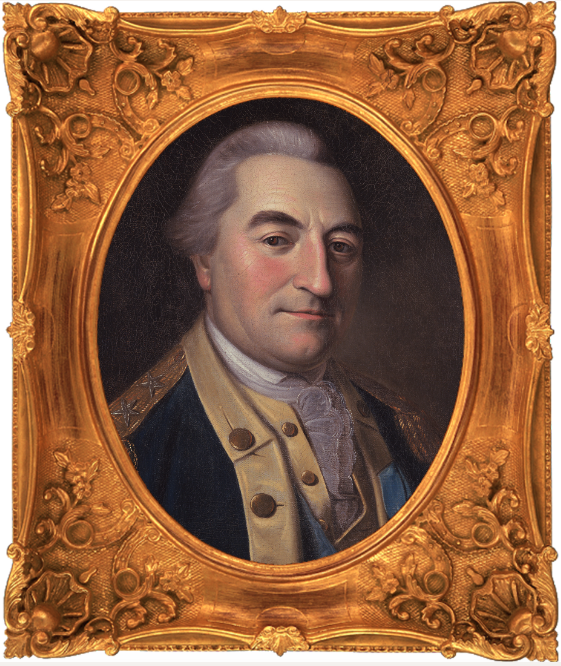
Courtesy of Independence Hall, National Parks Service
Baron Johann de Kalb (1721-1780)
Johann de Kalb was born in Bavaria and served with distinction in the French Army until his retirement in 1764. In 1777, at the request of King Louis XVI, de Kalb accompanied the Marquis de Lafayette to America. De Kalb was soon commissioned a Major General in the Continental Army and served under General Washington. In 1780, de Kalb led his Maryland and Delaware Continentals south to engage the British in South Carolina. Major General de Kalb’s conduct at the Battle of Camden, South Carolina on August 16, 1780, was one of the outstanding feats of sheer bravery during the American Revolution. His powerful physique towered over his outnumbered Continental troops as he led them forward against the British line, only to receive eleven wounds that would slowly drain his life away, until his death in Camden three agonizing days later, on August 19.
Sarah Gardiner McCalla (1757-1821)
Sarah McCalla was born in Pennsylvania in 1757 to James Gardiner and his wife Rebecca Wayne. Sometime between 1771 and 1775, Sarah met Thomas McCalla, a new immigrant from Northern Ireland. They married and eventually moved to Chester District, SC. During the Revolution, Thomas served in the Pennsylvania and South Carolina militias, eventually being taken prisoner at the Battle of Hanging Rock in 1780 and was held by the British in occupied Camden. Sarah persisted in petitioning the British army for her husband’s release and eventually prevailed in 1781 when McCalla and 10 other men were exchanged for two British officers.
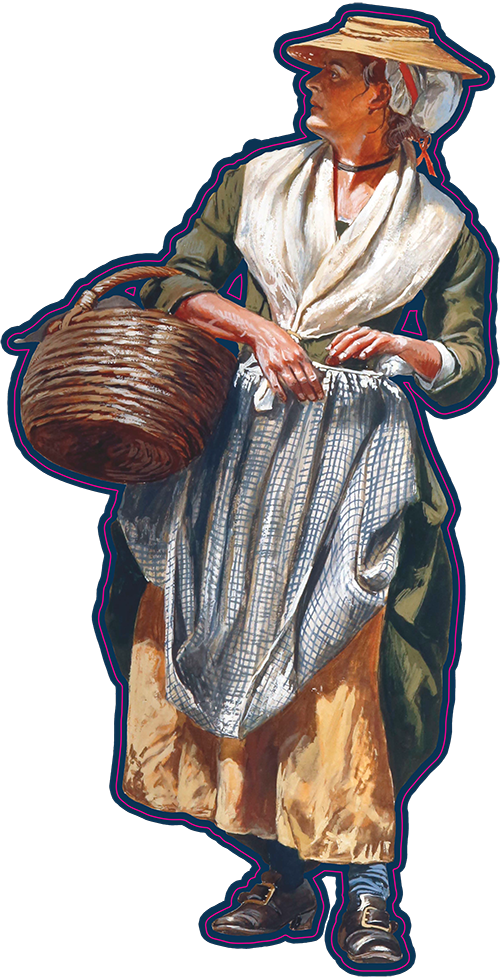
Courtesy of Don Troiani
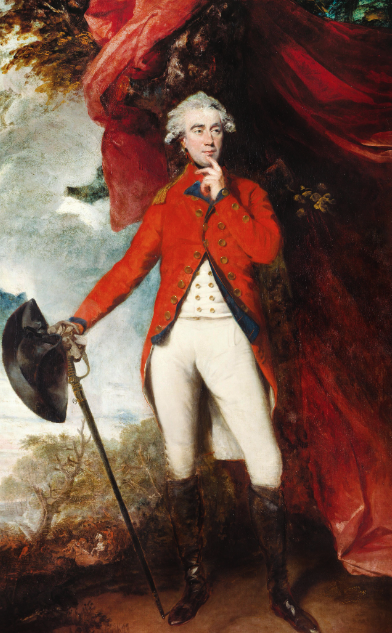
Courtesy of National Portrait Gallery
Lt. Colonel Francis, Lord Rawdon (1754-1826)
Born in Ireland, Rawdon joined the British Army in 1771. He saw action from Lexington and Concord in April 1775 to South Carolina in 1781. In the North, Rawdon raised a regiment of Loyalists called the Volunteers of Ireland prior to joining Cornwallis in the South. During the Southern Campaign, Rawdon commanded the British left wing at the Battle of Camden. He later commanded the Camden garrison and defeated Greene’s Continentals at the Battle of Hobkirk’s Hill. After relieving the loyalist garrison at Ninety-Six, Rawdon withdrew his forces to Charleston. He returned to England and became a successful politician.
African Americans
African Americans served on both sides during the American Revolution. However, the Americans, especially in the south, were never willing to allow large numbers of enslaved people in their ranks. British officers were willing to raise entire regiments of formerly enslaved people for the British Army. An estimated 20,000 African Americans fought for the British army and an estimated 5,000 fought for the patriots.
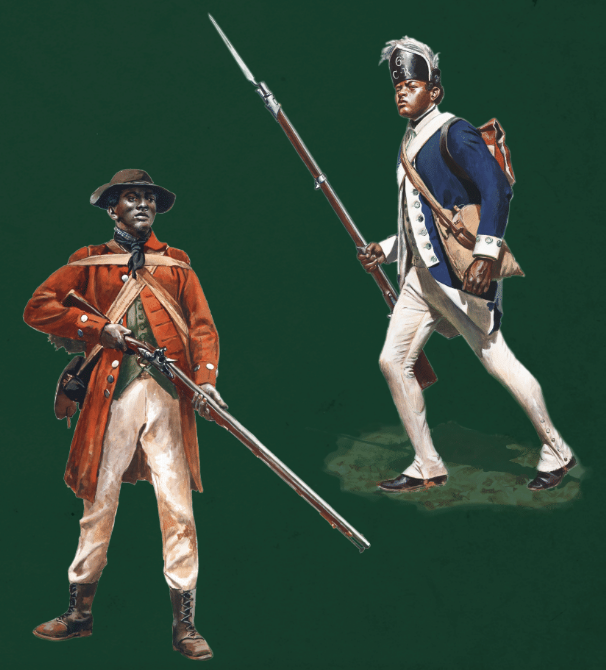
Courtesy of Don Troiani
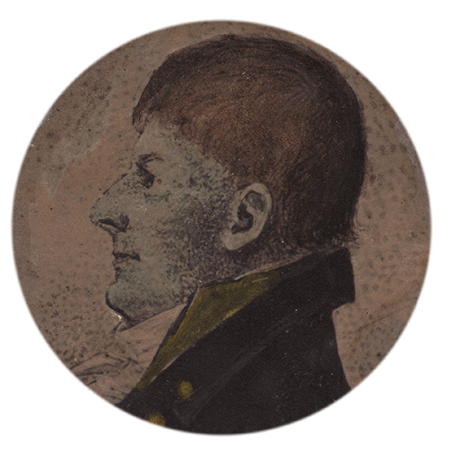
Courtesy of Camden Archives and Museum
Joseph Kershaw (c1727-1791)
Born in England, Kershaw immigrated to South Carolina and established a mercantile store at Pine Tree Hill, now known as Camden. Kershaw played a leading role in the planning and growth of the city and is now known as the “Father of Camden.” He was also a staunch patriot and served in the First and Second Provincial Congresses and in the General Assembly (1776-1784). He was a member of the SC militia and led troops against the British until his capture in August 1780. After the Revolution, Kershaw returned to Camden where he died in 1791.
Who or What Was I?
Can you identify some of Camden and Kershaw County’s most famous (or infamous) citizens during the American Revolution? Try your luck by downloading our “Who or What Was I?” quiz below.
